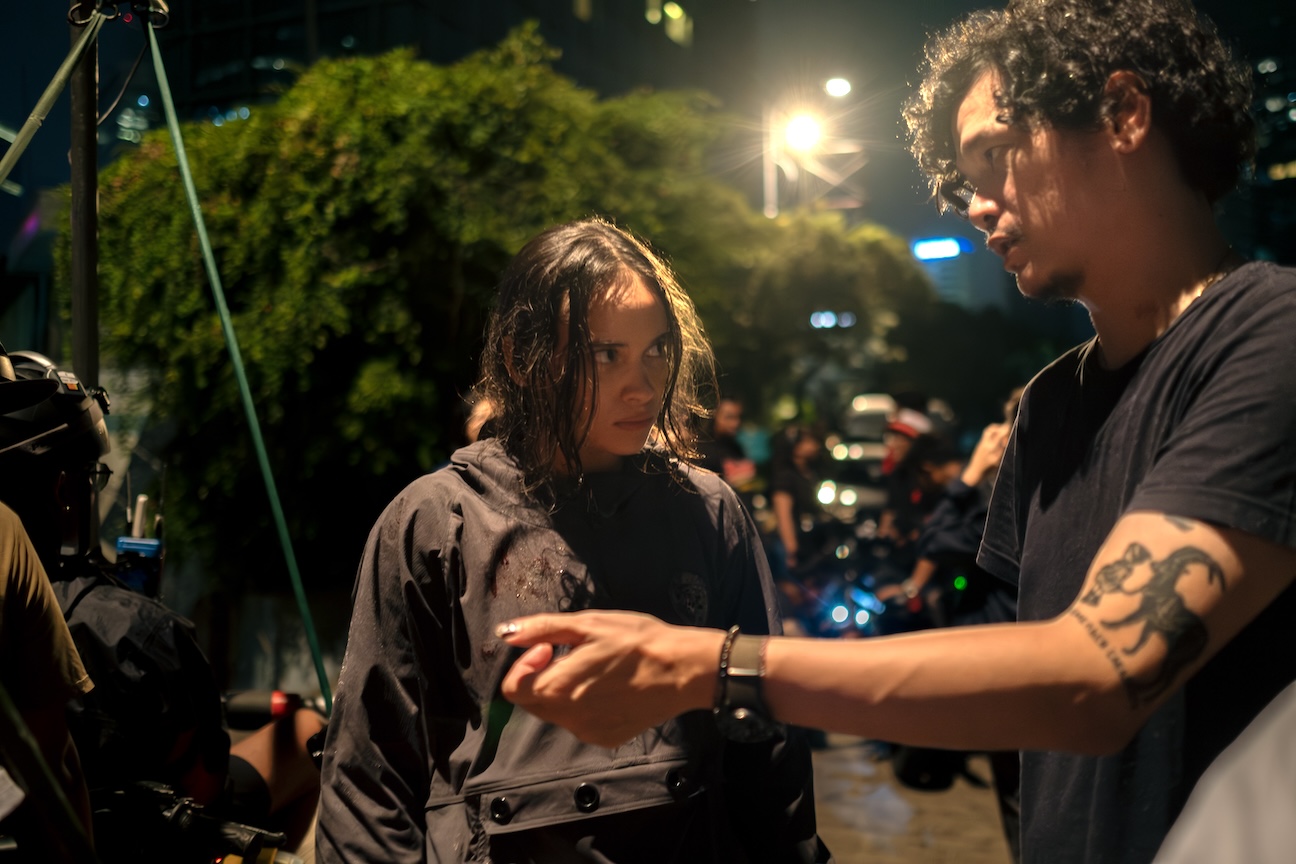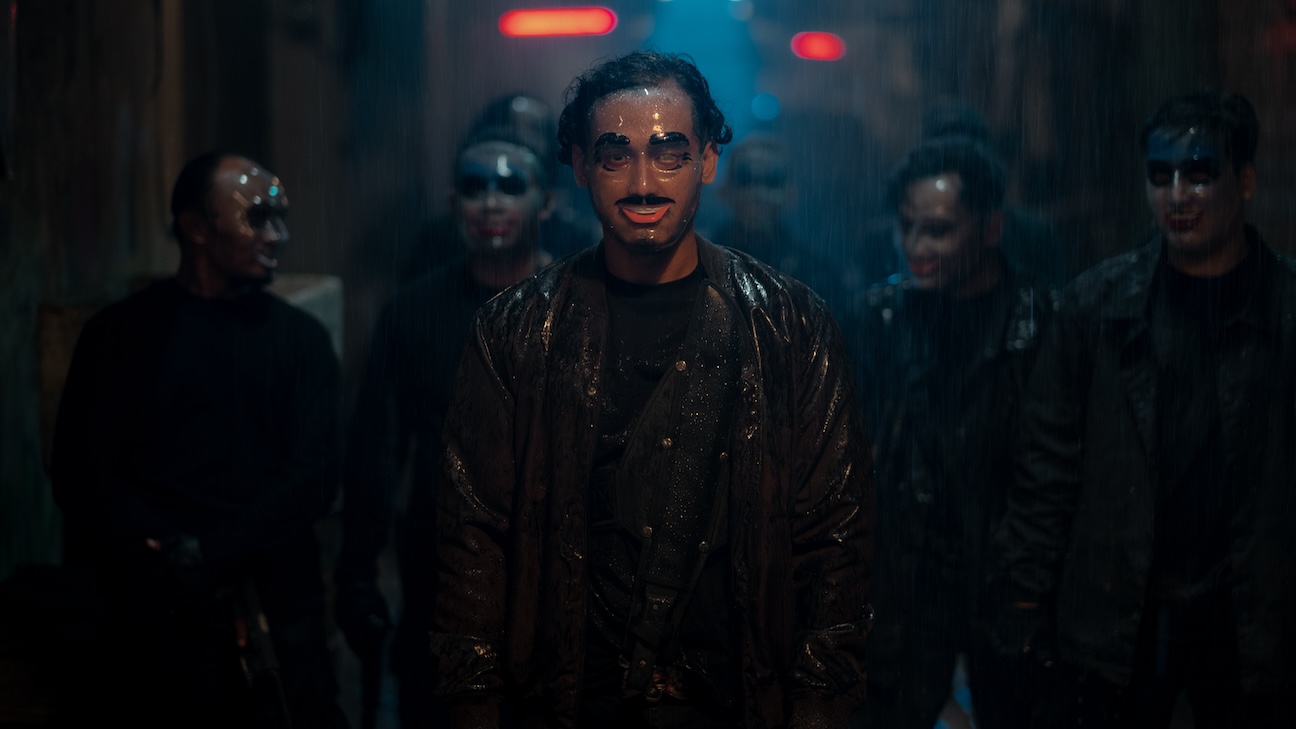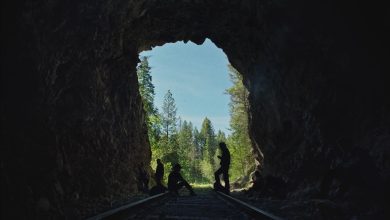Indonesian Action Maestro Timo Tjahjanto on Bringing His Signature Ultra-Violence to Netflix’s ‘The Shadow Strays’

If there were an AI prompt behind Indonesian action maestro Timo Tjahjanto’s latest Netflix movie The Shadow Strays, it would probably go something like this: “Give me John Wick but make it Indonesian women with uzis and samurai swords — and more brutal.”
Not that anything feels remotely artificial about the viscerally kinetic set pieces that explode off the screen throughout the cult filmmaker’s latest action melodrama.
Tjahjanto has won a worldwide following with his relentlessly creative fight choreographies, punctuated with liberal doses of squirm-inducing ultra-violence. The Shadow Strays is his second film for Netflix, following the more comedic The Big 4, under an ongoing multipicture deal. He also recently wrapped production on his Hollywood debut, the action sequel Nobody 2, starring Bob Odenkirk, Sharon Stone and the RZA, which is due out in 2025.
The Shadow Strays, which dropped on Netflix on Thursday, is unlikely to disappoint the director’s legions of international fans. The film tells the story of a teenage female assassin code-named 13, who belongs to an underground network of killers known as “the Shadows.” When a young boy from the protagonist’s neighborhood falls prey to a ruthless crime syndicate, 13 defies her mentor to save him — unleashing hell fury from all directions.
The Shadow Strays
Despite the film’s brutality, Tjahjanto describes it as a covert coming-of-age movie — to an extent.
“In the end, it’s about this character learning the hardest lesson in life — that things are not always in your control,” he explains. “Even when you try to make things better, they might just get worse.”
The director said he cast his star, 20-year-old Aurora Ribero, after seeing her breakout performance in the youth drama Like & Share.
“When it comes to action, anybody who has the will and spirit to train can eventually execute it — but you don’t see this humanity in every performer,” Tjahjanto says. “Aurora has a certain innocence in her eyes that’s one in a million.”
Indeed, throughout Shadow Strays, Ribero oscillates between moments of poignant fragility and unbridled rage. Hitting both these notes convincingly is what makes the actress’ work particularly impressive, according to her director.
“One of the aspects that people tend to underestimate in making an action film is just how physically demanding it is — and even more so for Aurora on this project, because she had to keep walking a fine line between being a vulnerable person and a convincing killing machine,” he explains. “The journey that she went on behind the scene was just as hard as what she went through on the screen. It’s easy for people to take this genre for granted — to say, ‘Oh, it’s just another Pow! Pow! action film’ — but the commitment it requires is mind-boggling.”
Aurora Ribero and Timo Tjahjanto during production of The Shadow Strays.
Ribero, who had zero action cinema experience going into the project, spent four months training intensively with Tjahjanto’s veteran stunt choreography crew. There were moments early in the preparation when she broke down and doubted whether she’d be able to continue.
“I think it is one of the bravest things I have done in my life,” she says. “I felt so lost in the beginning. I do yoga, so I thought I was pretty flexible, but it turns out I needed to have strength too. But once you get into the flow of the training, you build muscle memory.”
Tjahjanto concedes that he hardly conforms to the stereotypes of stunt cinema himself.
“On the film I just shot, Nobody 2, I think a lot of the Hollywood stunt guys and the choreography team were expecting some muscle-bound dude with a stunt background to arrive on set,” he says. “Instead, they got this scrawny Asian guy.”
He adds: “I am known as an action director, but it’s funny because the kinds of films I really prefer are human dramas.”
The filmmaker says he strove to imbue the Shadow Strays‘ characters with the kind of human complexity that wouldn’t be out of place in an Akira Kurosawa classic. But he also wanted to create a pitiless world for his story — “darker and moodier, with a neo-noir aesthetic.”
“I think there is room for violent action cinema,” he explains. “Not every action movie has to be a superhero movie. I don’t have any problem with superhero movies. But action films, in the end, are made for grown-up people. And I want grown-ups to watch this and be able to say, ‘Yeah, that’s what happens if you put a sword into a person’s neck.’”
Asked what he hopes to transport from Indonesia’s action cinema to Hollywood with his forthcoming work with Odenkirk on Nobody 2, Tjahjanto is blunt: “I hope it’s the brutality.”
The Shadow Strays
Source: Hollywoodreporter
Related Posts
- Roundball Rocked: With NBA Return Looming, NBC Purges Scripted Roster
- SoundCloud Says It “Has Never Used Artist Content to Train AI Models” After Backlash on Terms of Service Change
- Fox News’ Camryn Kinsey Is “Doing Well” After Fainting on Live TV
- Kerry Washington and Jahleel Kamera in 'Shadow Force.'
Courtesy of Lionsgate
…
- This Alternative Artist Landed a Top-20 Chart Debut With an Album Made Almost Entirely on His Phone




